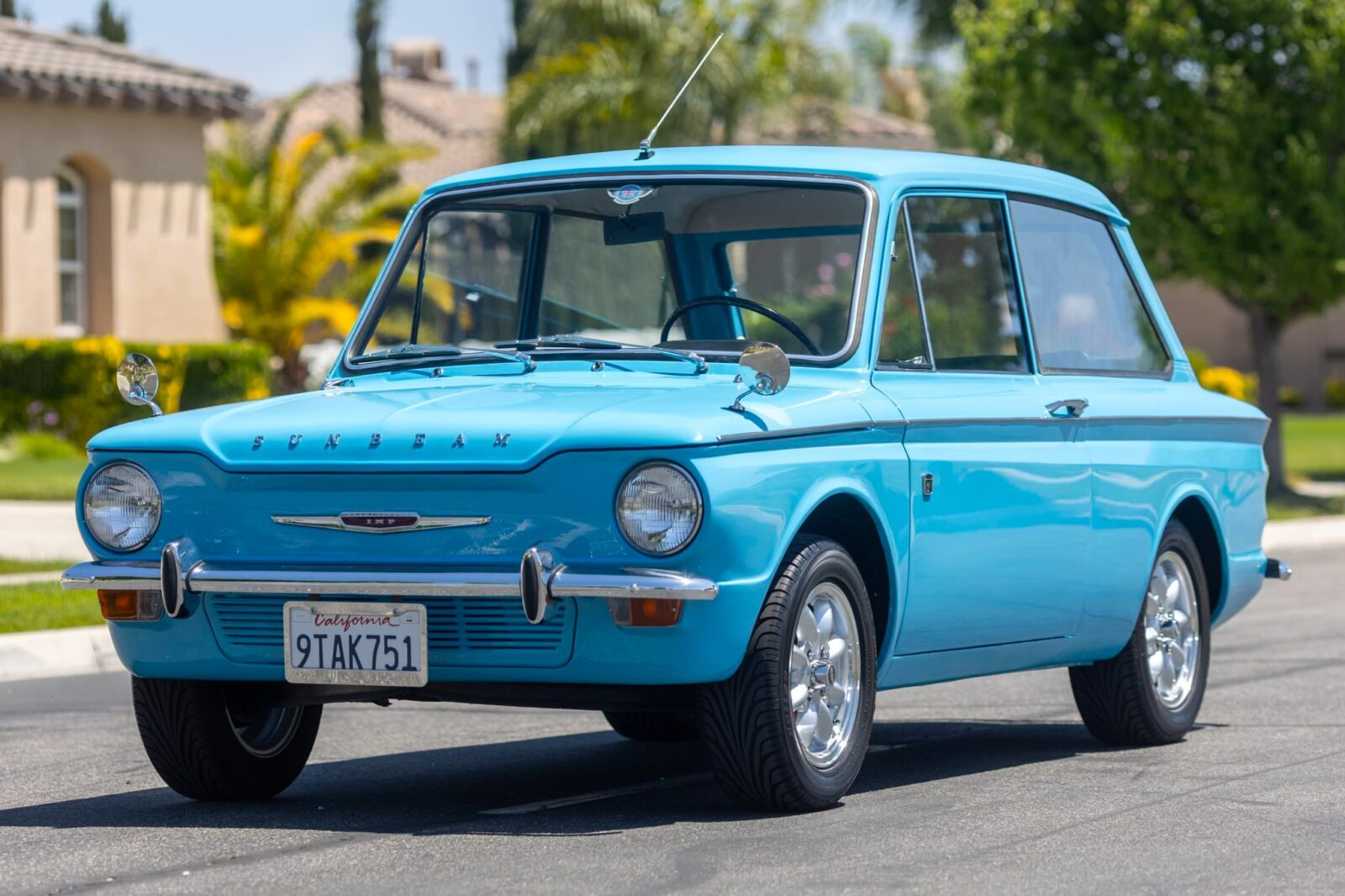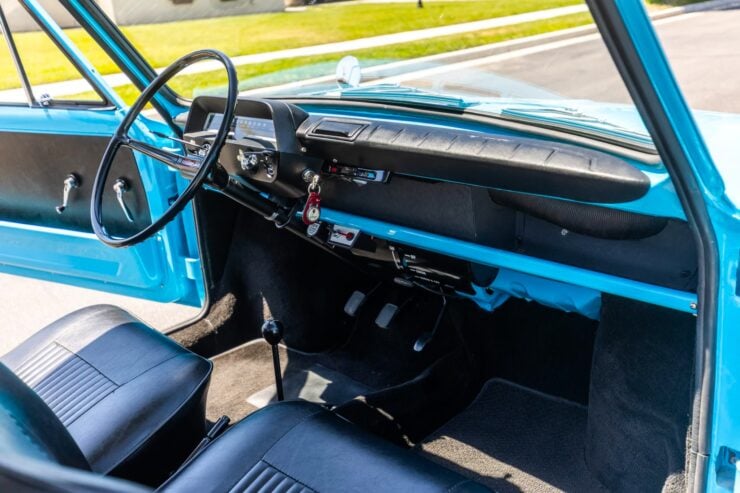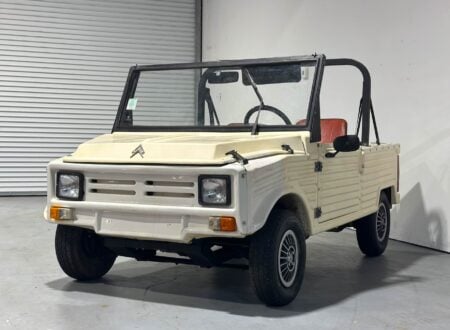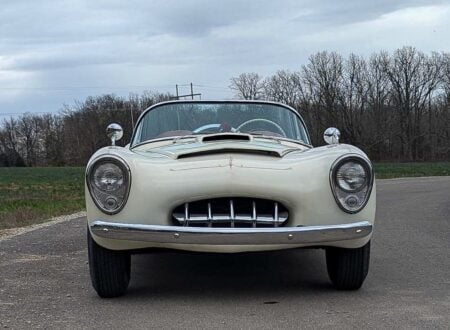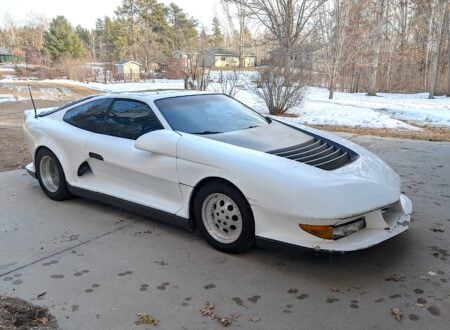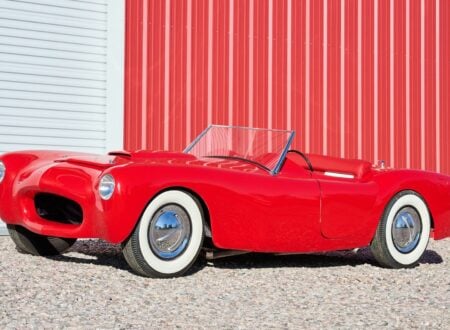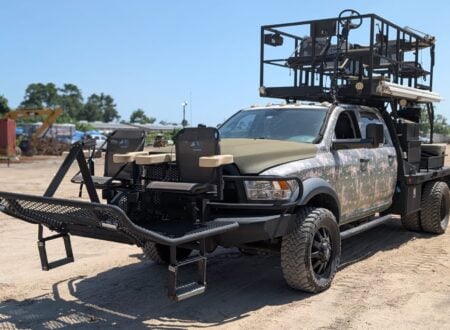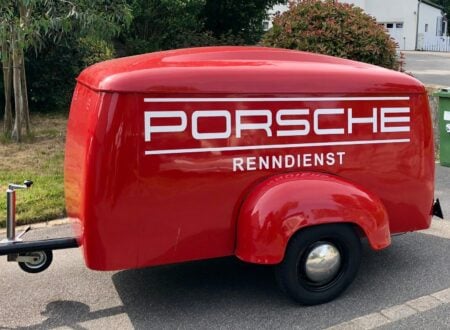This is a Sunbeam Imp, a badge-engineered Hillman Imp. It was developed by future Ferrari Formula 1 driver Mike Parkes – the same man who would later be the primary development engineer of the Lancia Stratos.
This is one of those articles that I write knowing that it won’t get as much attention as others, like stories about WWII fighter planes, a Batmobile, or a Cobra Jet Mustang. I write it anyway because I happen to be a big fan of the little Imp, and I think it deserves to be a much better-known classic than it is.
Fast Facts: The Sunbeam Imp
- The Sunbeam Imp, a badge-engineered version of the Hillman Imp, was developed by Mike Parkes, who later drove for Ferrari in Formula 1 and was a key engineer behind the iconic Lancia Stratos. Despite its modest reputation, the Imp featured several pioneering design elements, including a lightweight aluminum-alloy engine, innovative transaxle, and independent four-wheel suspension.
- Rootes launched the Hillman Imp in 1963, positioning it as a direct competitor to the popular BMC Mini. Built in Linwood, Scotland, the Imp initially struggled with quality control due to logistical issues and inexperienced workers, resulting in engine overheating and reliability problems that hampered its early reputation.
- Multiple badge-engineered variants expanded the Imp’s appeal, including the luxurious Singer Chamois, performance-oriented Sunbeam Imp Sport, stylish fastback Sunbeam Stiletto, and practical Commer Imp Van.
- The Imp achieved unexpected motorsport success, notably in club racing, rallies, and endurance runs. Key achievements include Rosemary Smith’s victory in the 1965 Tulip Rally, Bill McGovern’s British Saloon Car Championship wins from 1970 to 1972, and a record-setting 1964 coast-to-coast run across the United States, boosting the car’s reputation despite limited factory support.
The Mighty Hillman Imp
In the late 1950s, automotive manufacturer Rootes recognized the need to enter the rapidly growing small car market. The wild success of the Mini, launched in 1959 by BMC, highlighted a fundamental shift in consumer desires toward compact, efficient, and affordable vehicles – influenced in no small part by the Suez Crisis of 1956 which had sent fuel prices skyrocketing.
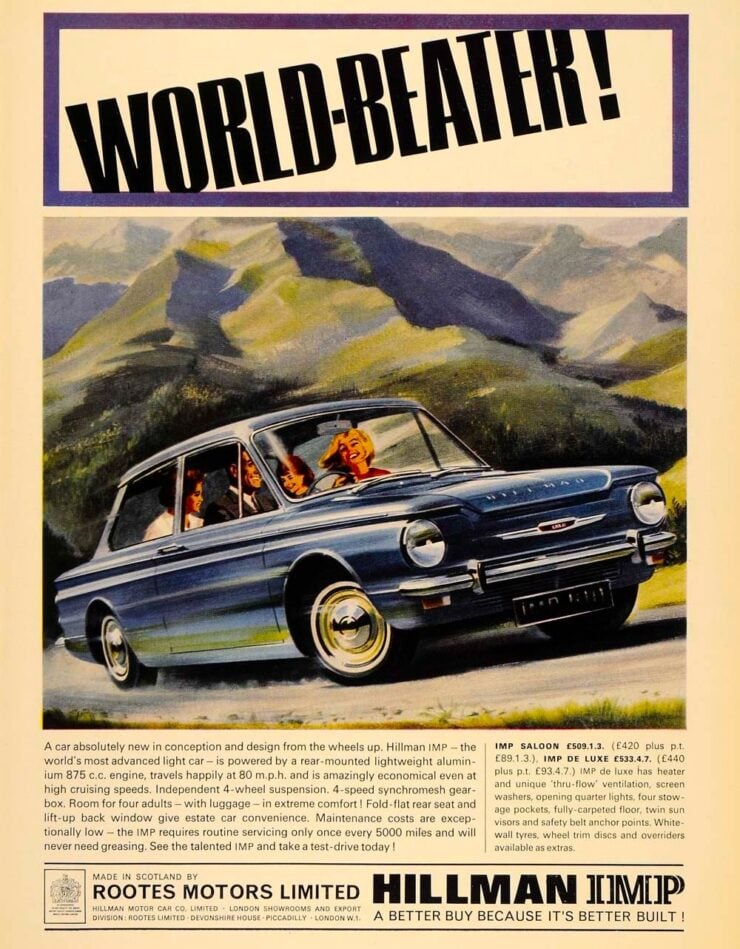

The British government had incentivized manufacturers to establish operations in economically disadvantaged regions, and Rootes took the opportunity to build a new factory in Linwood, Scotland, to produce their new small car. Initially, it was internally codenamed the APEX Project, though this name would be changed to Imp for production.
The word “Imp” is defined in the Oxford English Dictionary as: “A small, mischievous devil or sprite.” Which seems quite fitting when you look at the car, and remember it was developed to take the fight to the Mini in the small car market.
The Imp’s development was spearheaded by a relatively young team within Rootes, including key figures like Mike Parkes (who would later become a Ferrari Formula 1 driver and the engineer behind the Lancia Stratos) and Tim Fry, a brilliant engineer who would later develop the award-winning “Sea Truck” in the late 1970s.
The Rootes design brief called for a car that was innovative, lightweight, and fuel-efficient, but also practical and comfortable. The engineering team drew inspiration from then-current European trends (including the Mini and Fiat 500) and paid close attention to weight distribution, ride quality, and drivetrain layout.
The Imp: Specifications
Whereas the BMC Mini used a transverse front engine and transmission driving the front wheels, the design coming out of Rootes would flip this around, and use a longitudinal, rear-mounted engine driving the rear wheels. Both designs eliminated the need for a central transmission tunnel and resulted in a flatter floor with more interior space.
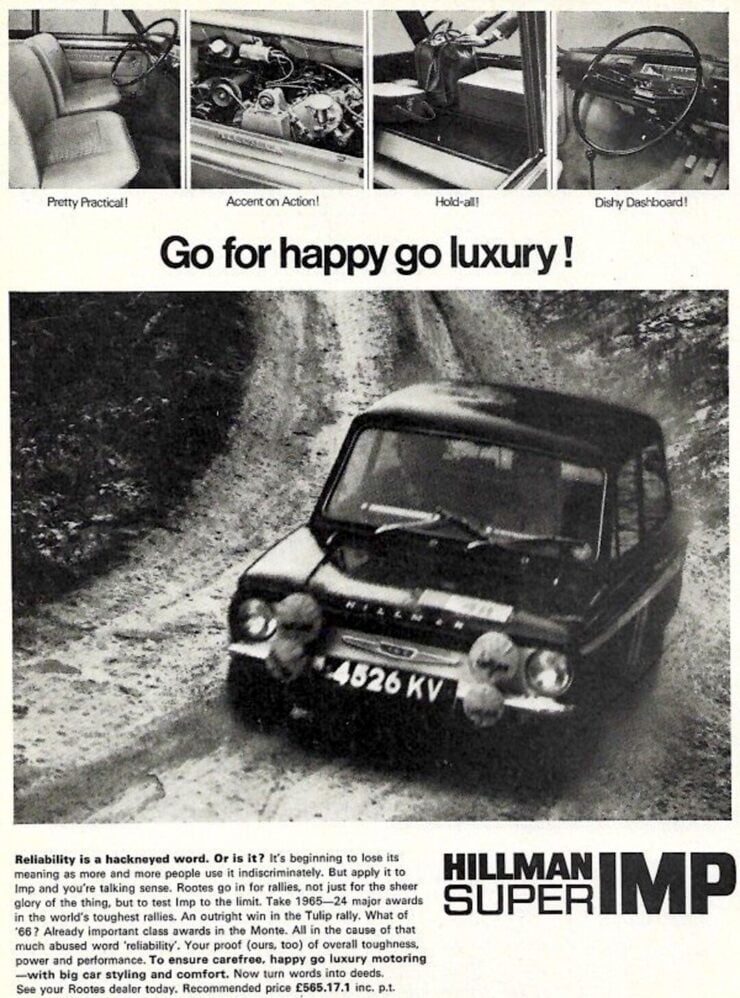

One of the major innovations of the Imp was the use of an aluminum alloy engine based (somewhat) on the Coventry Climax FWMA engine, originally designed as a fire pump motor but also used with great success in racing applications.
In Imp form, the 875cc overhead cam inline-four was detuned for road use, producing 39 bhp in standard trim. The use of aluminum alloy for the block and head was rare in a mass-produced car at the time, in fact, it was the first British car powered by one, and it contributed to less weight over the rear end.
The rear engine was paired with a 4-speed transaxle that had to be developed specifically for the car. Due to its rear weight bias, the Imp used semi-trailing arm independent rear suspension, paired with an independent front end.
The car also initially had a unique pneumatic throttle linkage and a fold-down rear seat to improve luggage space, both novel features in this class at the time.
The Release Of The Imp
The Hillman Imp debuted in May of 1963, with significant national fanfare. It was compact, light, and well-equipped compared to its rivals. That said, production ramp-up was plagued by problems. The Linwood plant, built from scratch with an inexperienced workforce, suffered from quality control issues and logistical inefficiencies – parts had to be transported 300 miles from Coventry.
Early models were somewhat unreliable, particularly with regards to engine cooling and transmission durability, which damaged the Imp’s early reputation.
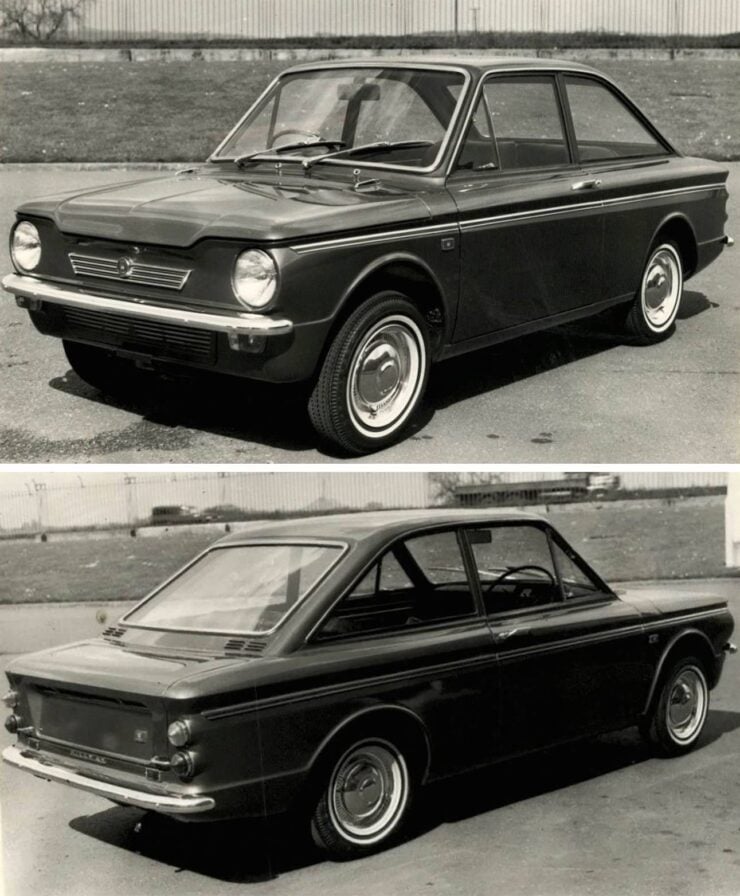

Despite its teething difficulties, the Imp developed a strong following. Its peppy engine, light weight, decent handling, and good visibility made it an ideal urban car and a popular rival for the Mini.
As the manufacturing issues were gradually ironed out, Rootes expanded the Imp lineup and developed a series of “badge engineered” variants to suit different markets and niches.
Badge-Engineered Variants
Rootes was known for using badge engineering to extend the reach of its platforms across various brands under its umbrella, including Hillman, Singer, Sunbeam, and Commer. For the uninitiated, badge engineering is simply rebadging a model with minimal other changes. The Imp platform served as the basis for multiple variants, each tailored to a different country/region or market position.
Singer Chamois – Introduced in 1964, the Singer Chamois was a more luxurious version of the Imp, featuring additional trim, upgraded upholstery, and a more refined interior. Mechanically similar to the Hillman variant, it was aimed at a more conservative buyer seeking a little more refinement.
Sunbeam Imp Sport – Launched in 1966, this was a performance-focused model. The Sport featured twin Stromberg carburetors, a front anti-roll bar, and a reworked cylinder head, increasing output to 51 bhp. It also had sportier suspension tuning and cosmetic upgrades like auxiliary lamps and a sporting interior. It became a favorite among club racers and hill climb competitors due to its agile handling and highly-tunable engine.
Sunbeam Stiletto – Effectively a fastback version of the Imp Sport, the Stiletto featured a classic fastback roofline, quad headlamps, and a premium interior. It retained the twin-carb 875cc engine and offered (claimed) improved aerodynamics, though at the cost of some rear visibility and perhaps a little practicality.
Commer Imp Van (Husky) – A commercial variant was produced under the Commer and later Hillman nameplates. It featured a larger cargo area with a simplified panel van-like cabin and was marketed to small businesses. The van shared much of the passenger car’s mechanical layout, but was structurally modified to handle heavier payloads.
Honorable Mention:
Hillman Super Imp – A mildly upmarket version of the standard Imp, with improved trim, revised instrumentation, and additional creature comforts. This helped maintain competitiveness as rival offerings improved through the late 1960s.
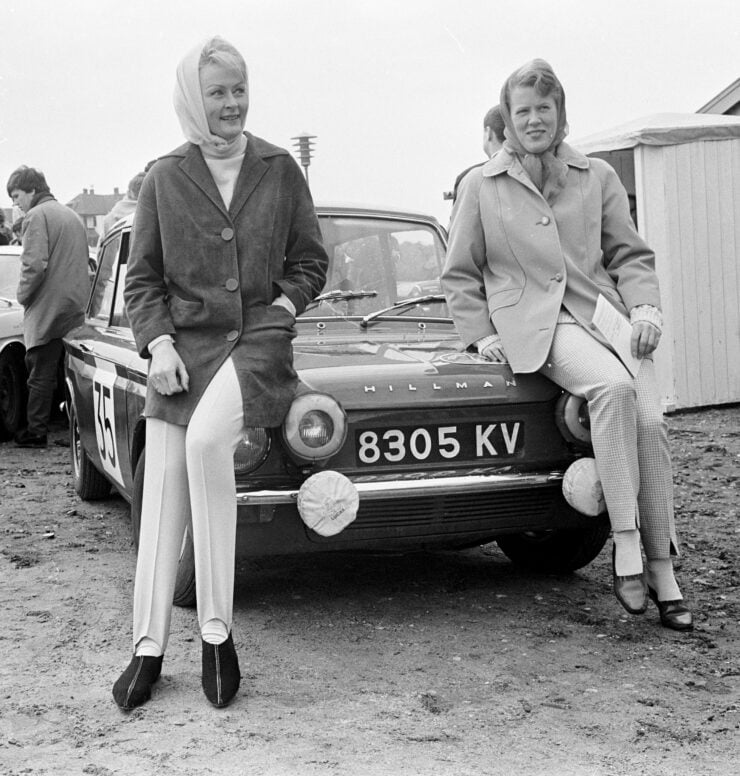

The Imp Goes Racing
Despite its humble economy car market positioning, the Imp would achieve major successes in motorsport, following a rather similar path to the Mini. Tuners like George Bevan and privateers across the UK and Europe used the lightweight, overhead-cam, rev-happy engine, and rear-wheel drive layout to great effect in club racing, rallying, and hill climbs.
In August of 1964, a Sunbeam Imp sports sedan, the official test car for American Rodding magazine, completed a sanctioned coast-to-coast endurance run across the United States, breaking a long-standing transcontinental speed record.
The route spanned 3,011 miles from New York City to Los Angeles, using the newly constructed Interstate Highway System, and was completed in 48 hours, 9 minutes, and 54 seconds at an average speed of 63.7 mph. This effort beat the previous record of 53.5 hours set over three decades earlier in 1933 by Erwin George “Cannonball” Baker, a legendary figure in American endurance driving.
Privately prepared Imps would dominate the British Saloon Car Championship, winning in 1970, 1971, and 1972 with relatively little in the way of factory support, thanks to the efforts of driver Bill McGovern.
Perhaps the Imp’s most significant motorsport accomplishment came in 1965 when Rosemary Smith won the Tulip Rally driving a works-prepared Sunbeam Imp, making her one of the first women to win an international rally outright. The Imp also became a favorite for autocross and circuit events thanks to its excellent power-to-weight ratio and handling when properly sorted.
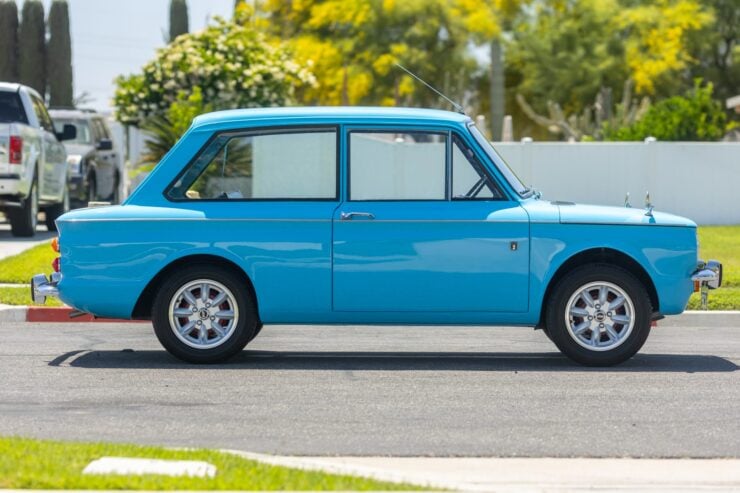

The End Of The Line
Despite continual improvements, the Imp could not escape its early reputation for unreliability. Sales never matched those of the Mini, and Rootes struggled with financial pressure through the 1960s. In 1967, Chrysler Corporation took a controlling interest in Rootes, and the focus began to shift toward more American-influenced models.
Production of the Hillman Imp and its derivatives continued until 1976, with over 440,000 units produced in total. The Linwood plant closed shortly thereafter. Though not as much of a sales success as Rootes’ original projections had hoped for, the Imp is remembered as a technically ambitious and influential little car that broke new ground in small car engineering for the UK.
The 1966 Sunbeam Imp Mark II Shown Here
The car you see here is a 1966 Sunbeam Imp Mark II, this means it benefits from a series of upgrades that were made to the original car, specifically to address engine overheating, engine performance was also improved, as was the front suspension geometry, and various trim upgrades were made.
This is a lefthand drive Imp that was restored in the 2000s and it’s now been imported into the United States. The car is finished in blue over a black vinyl interior, it rides on John Brown 13″ wheels, and it has fender-mounted mirrors, a glass rear hatch, a heater, and front lap belts.
As you would expect, it’s powered by a rear-mounted 875cc inline-four mated to a 4-speed manual transaxle powering the rear wheels.
It’s now being offered for sale with spare parts, literature, restoration photographs and various records, and a clean California title in the seller’s name. If you’d like to read more about it or place a bid you can visit the listing here.
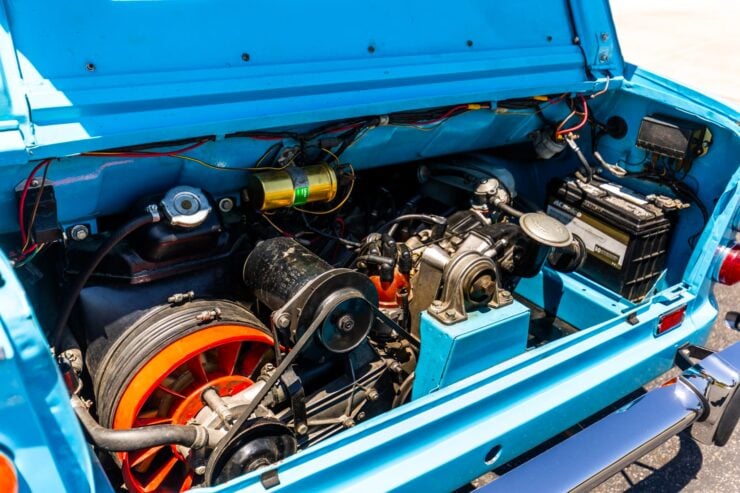
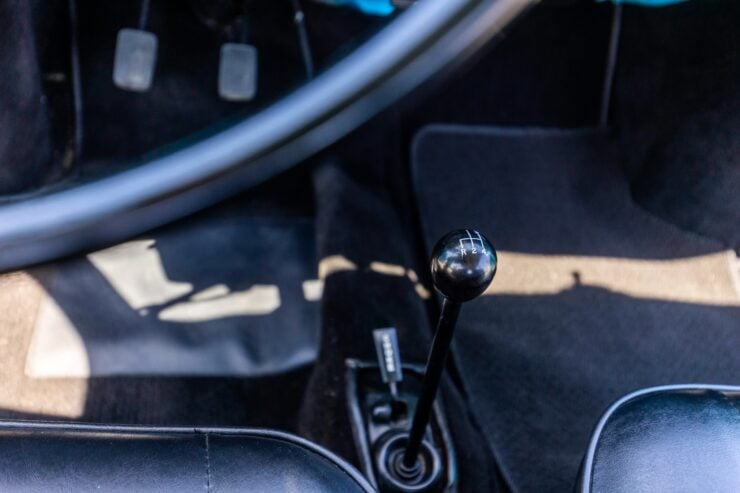
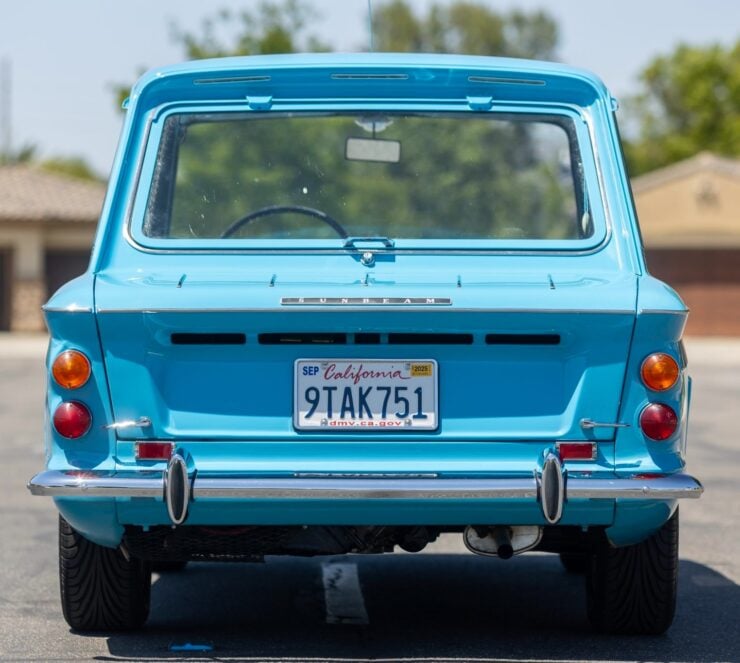
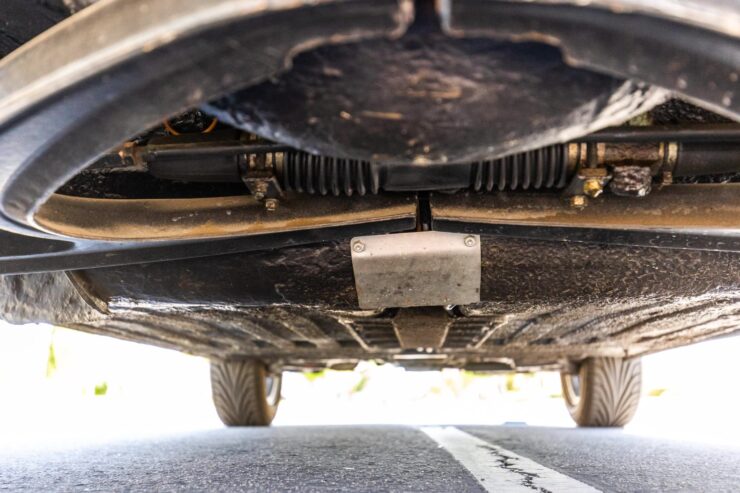
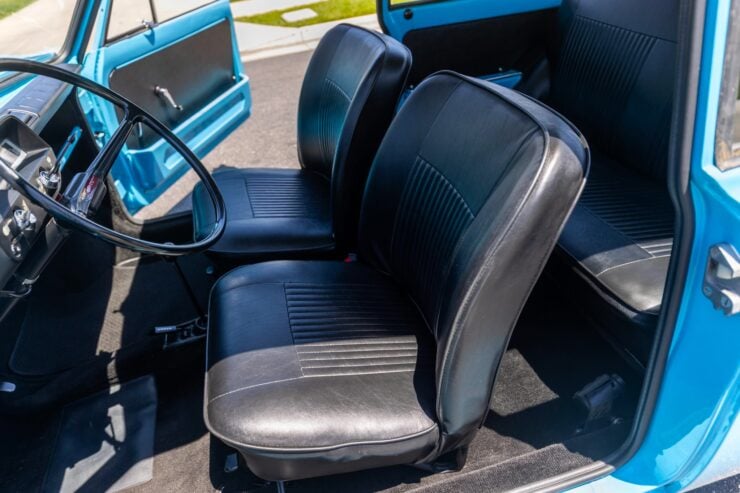
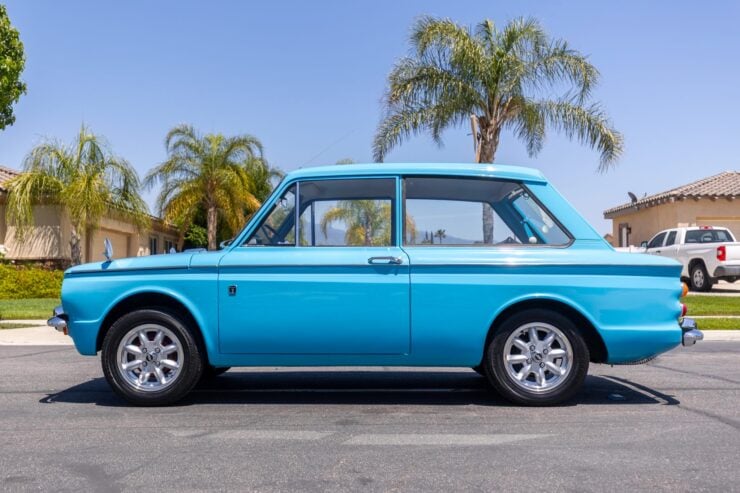
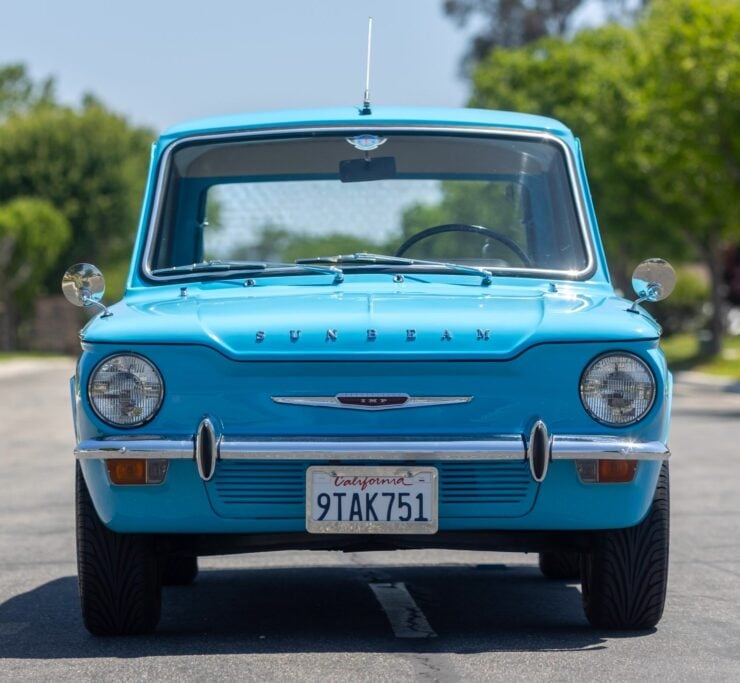
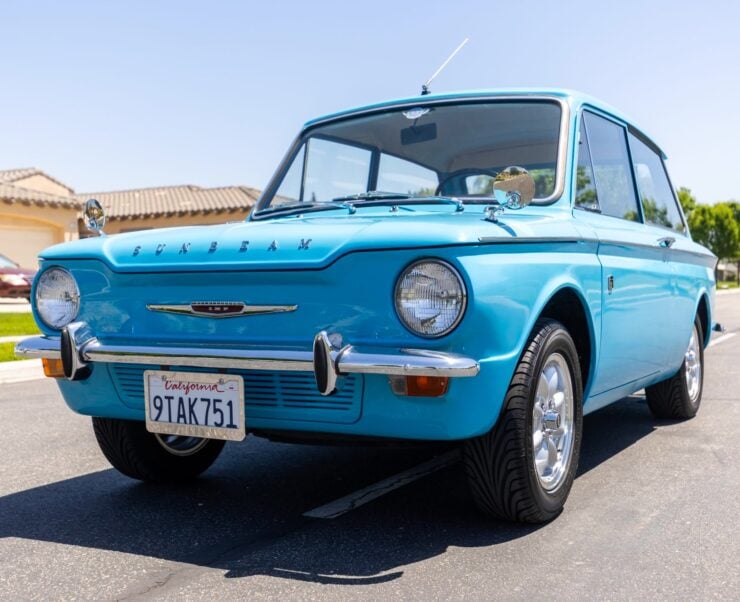
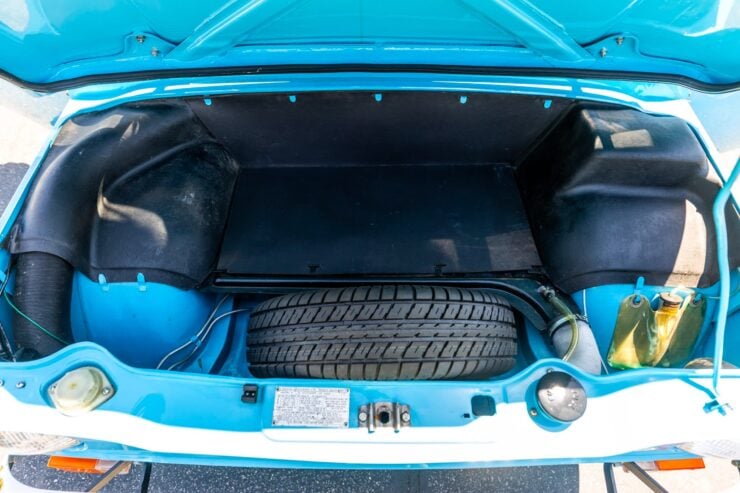
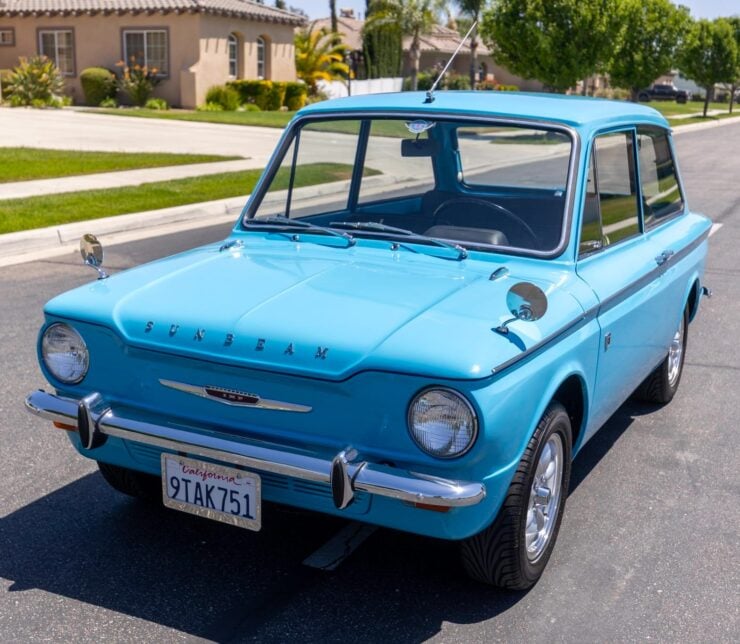
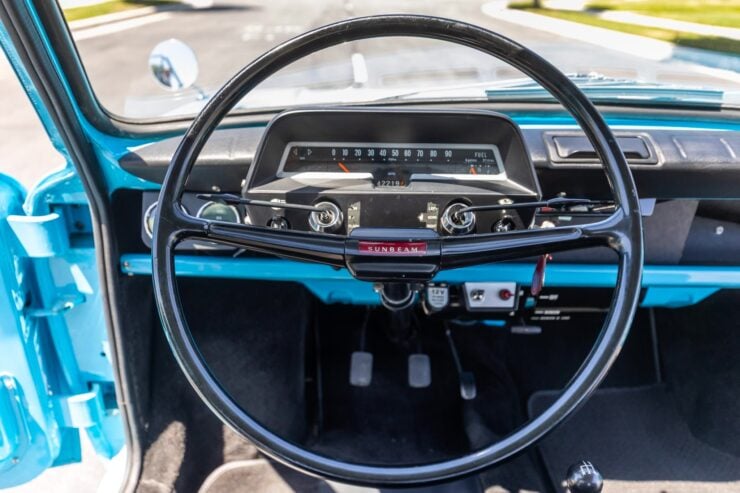
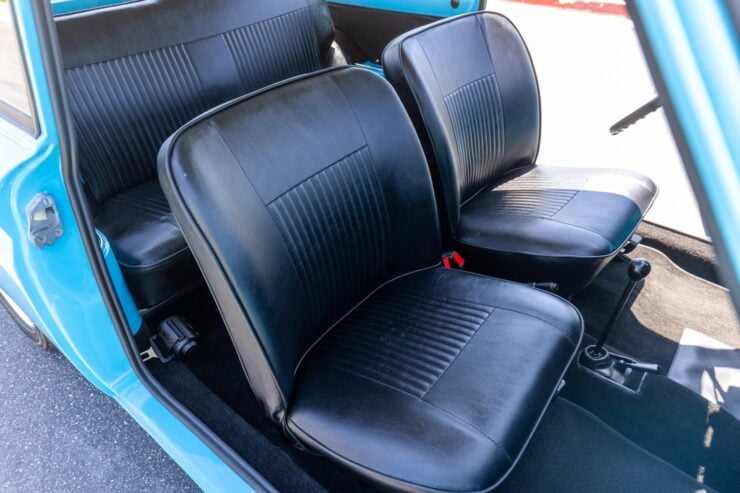
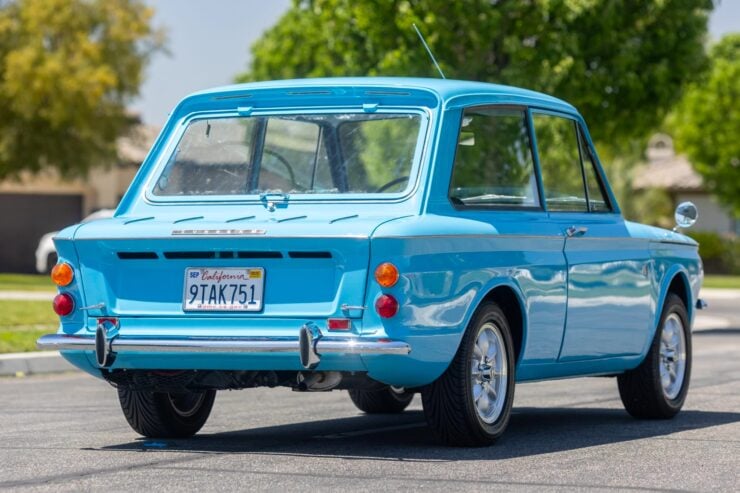
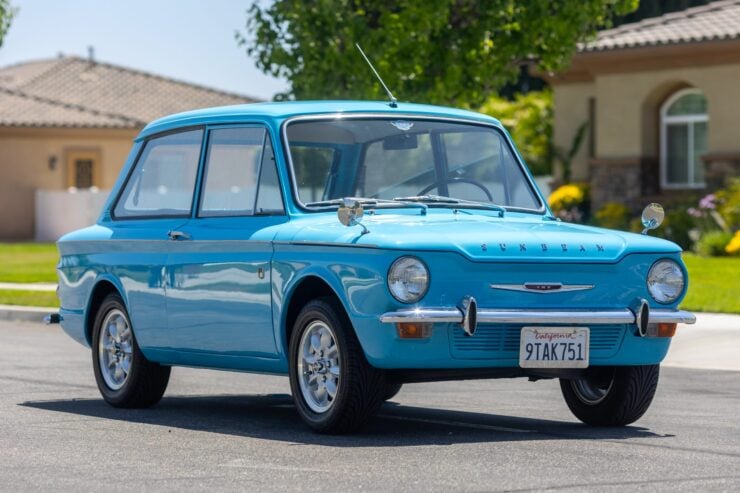
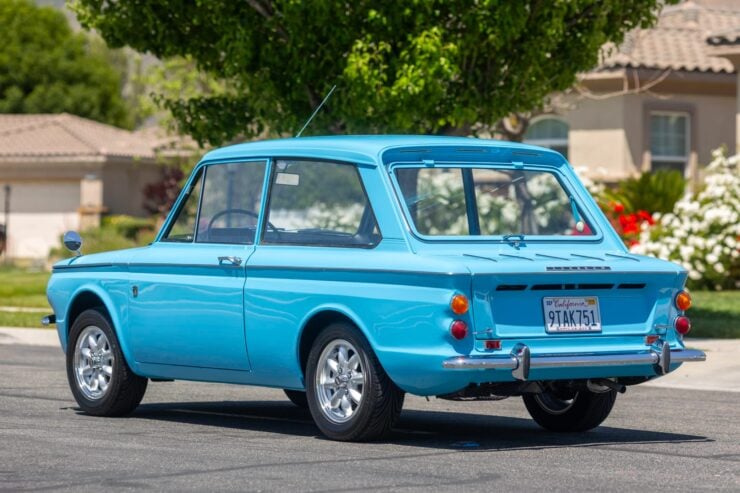
Images courtesy of Bring a Trailer

